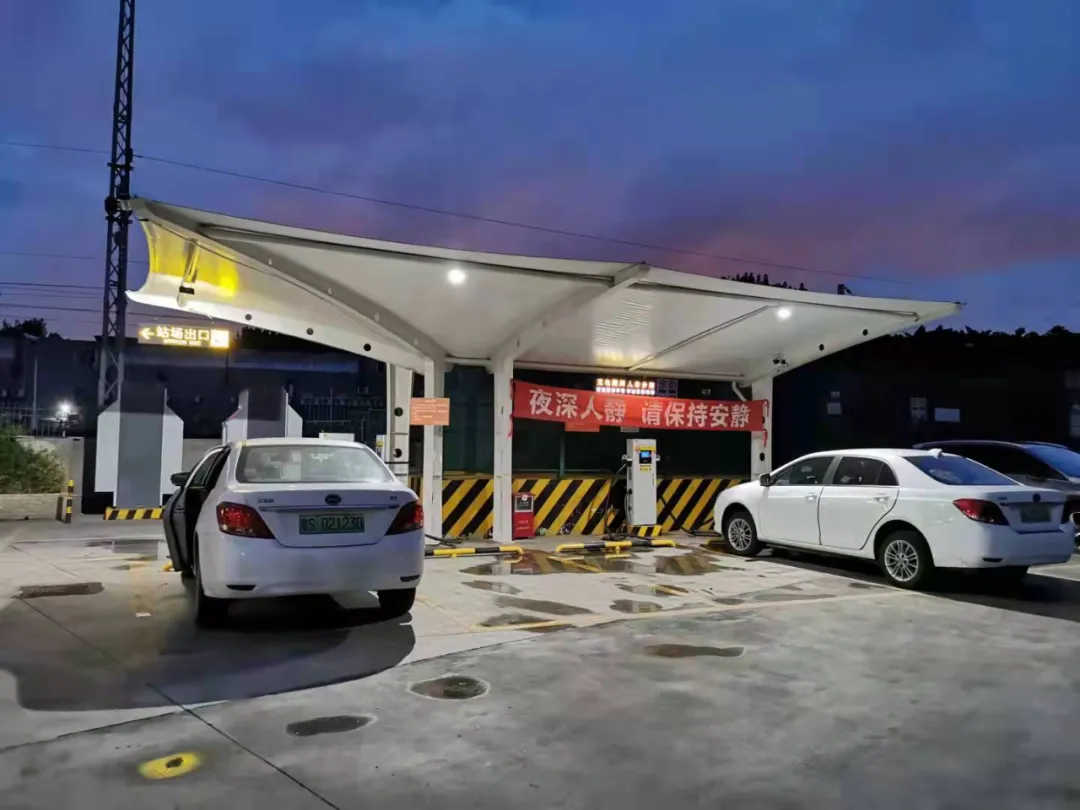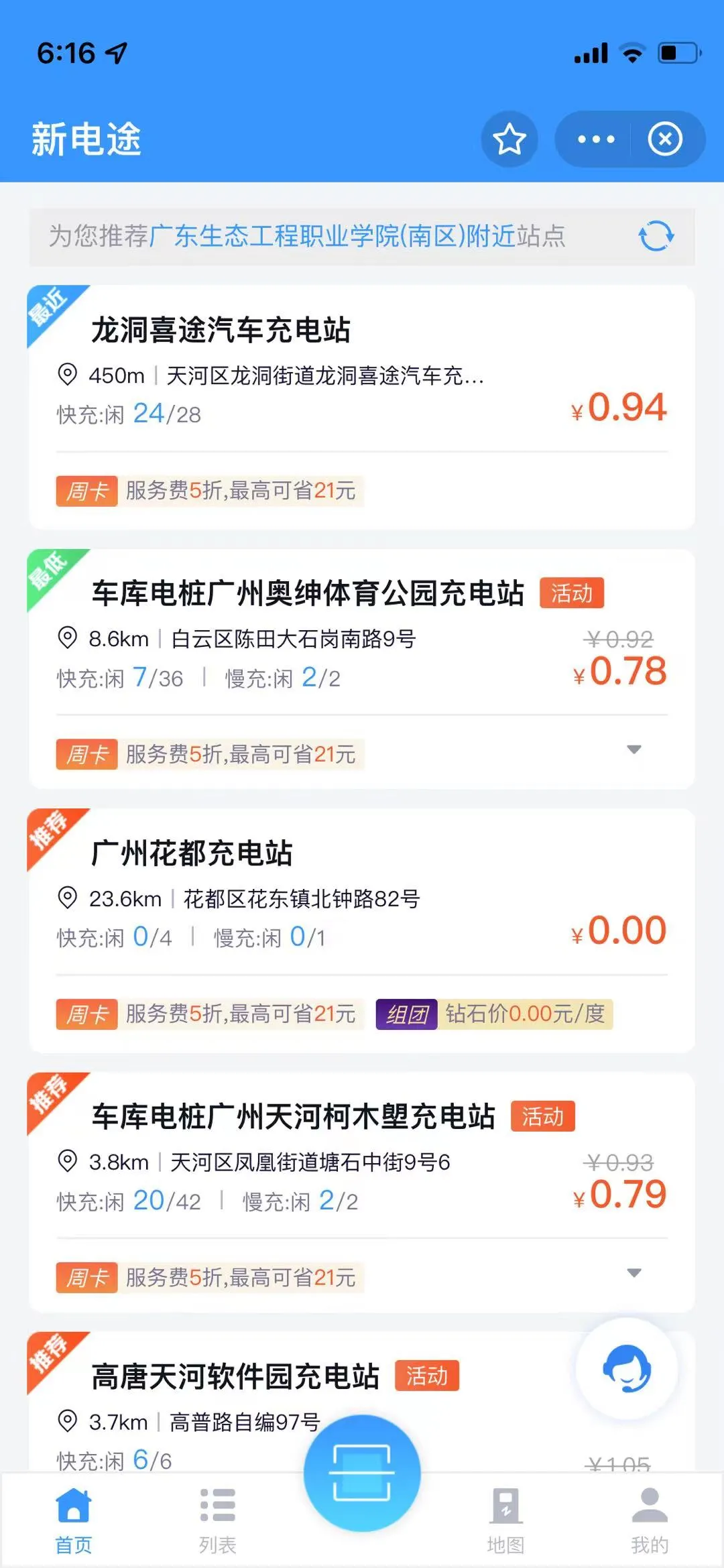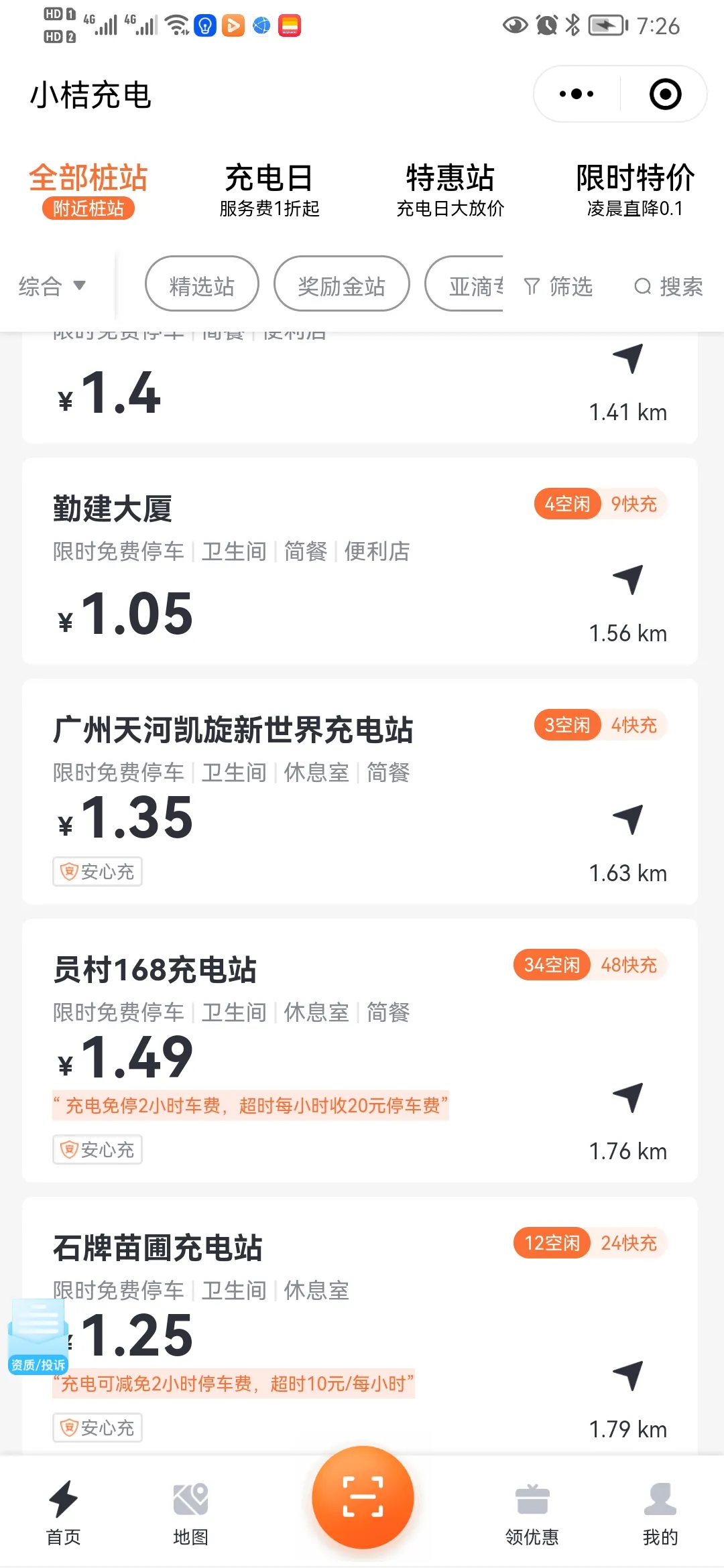Charging Industry in China
Author: Ah Xin
Since the first charging station in China was electrified and the first pure electric vehicle was registered in China, the charging industry has been advancing by leaps and bounds.
Especially in 2015, the State Council Office of the People’s Republic of China issued the “Guiding Opinions on Accelerating the Construction of Electric Vehicle Charging Infrastructure”. Electric vehicle charging gradually gained momentum. Experts said that the ratio of cars to charging stations should be 1:1, equipment manufacturers said that everyone should build charging stations and make a fortune, profiteers said that we should crowdfund together, and self-media said how tempting the subsidy policies are in various places…
The whole industry is very lively, and a batch of charging stations have sprung up like mushrooms after the rain. In 2020, at the “Two Sessions” of the National People’s Congress and the Chinese People’s Political Consultative Conference, the construction of charging infrastructure was officially listed as one of the “new infrastructure” projects by the state, adding further stimulation like adding fuel to the fire.
If it were not for the sudden outbreak of the pandemic that pressed the pause button on the global economy, charging stations will definitely usher in a new round of glory.
However, what kind of time are the charging operators going through?
The Best Time
By chance, I attended a dinner gathering in the charging industry in Guangzhou.
After a few rounds of drinks, these pioneers started to talk:
“I had a monthly profit of about 300,000 in 2018, and both my spouse and I were traffic police officers.”
“At that time, I was not worried about whether cars were coming, but rather we had too many cars.”
…
However, after recalling the best time, the tone changed:
“I only entered this industry because I saw that your business was good, who knew…”
“Can we talk about something happy and not talk about this job anymore?”
Suddenly it fell silent…
There is a saying in the charging industry: “Southern China leads the nation, Guangdong leads southern China, and Guangzhou leads Guangdong.” In July 2021, the charging volume in Guangdong Province reached 193 million kilowatt-hours, nearly twice the second-ranked Jiangsu Province.

“Digital energy, clean energy, new energy, carbon neutrality, carbon trading…” all these topics are related to electric vehicles and charging stations. On the roadside, at the entrance of high-rise buildings, at banquet tables, everyone discusses how to build charging stations, as if it is an industry that will be regretted for a lifetime if missed. In Guangzhou in 2018, as long as you could obtain a site with a lease period of no less than five years and had a certain amount of capital, you could easily enter the industry and own a “gas station” of the future.
Hidden Dangers
According to normal logic, after the charging station is built, customers only need to scan the QR code on the charging station to recharge and pay.However, different charging stations have different platforms, which require users to download multiple charging apps or mini-programs, resulting in poor user experience due to incomplete information. To solve this problem, platform vendors adopt the “Internet+” approach to form an industry ecosystem of “Internet+ charging infrastructure” to resolve the issue of incomplete information. This gives rise to a new business model—operating platforms.
These operating platforms are the “Meituan” in the charging industry and can be divided into four categories.
The first is to develop a platform based on the advantage of its own charging pile quantity and operate it independently or connect it to other platforms, such as State Grid, Southern Power Grid, Teld, and Star Charge.
The second is to operate an independent platform or connect it to other platforms depending on third-party platforms such as Cloud Quick Charging and Weijingyun.
The third is to develop and operate an operating platform based on the market positioning and customer needs, such as Tesla, XPeng, and Volkswagen.
The fourth is to leverage their own vehicle flow advantages to allow charging station equipment suppliers to connect to their platform with their communication protocol as the standard and operate it independently or interconnect with other platforms, such as Xioajiao Charging.
The standout platform among these is Xioajiao Charging, backed by parent company Didi Chuxing’s extensive fleet of online cars, which redirects the EVs in these fleets to the charging stations they partner with, bringing considerable profits to some cooperative stations.
In the early stages, Xioajiao Charging played a relatively active role in building the entire charging network, along with other operators such as Teld, Star Charge, and Wanma AiChong. With the iteration of taxis and the increase of online cars, the platform’s charging data continued to climb, and its position in the public transportation industry also rose.
However, “strategy” emerged as everything went on track. Xioajiao Charging continued to recruit new charging stations to join and personally drove the development of the industry, encouraging potential charging station investors to build charging stations with financial products. To stabilize its cooperative relationship with charging stations, its business contracts specify “either one” clauses and a whopping 1 million yuan penalty for breach of contract. Mid-size operators were still immersed in the dividends brought by Xioajiao’s flow diversion plan, but Teld, Star Charge, and Wanma AiChong found the clues. The “April Fool’s Day incident” in the charging industry occurred on April 1, 2019, and Teld, Star Charge, and Wanma AiChong promptly terminated their cooperation with Xioajiao Charging. However, this did not stop Xioajiao Charging’s expansion, and its encouragement, support, and subsidies made mid-size operators very interested, and one by one, charging stations opened on Xioajiao Charging’s platform.With the horns of anti-monopoly sounding, Xiaoju Charging seems to have realized that a single contract is not enough to ensure a stable relationship with the charging stations in its own camp. Then it launched a “booster shot”. Xiaoju Charging started to establish a “library” for charging piles, selecting some companies that sell a large number of charging equipment and encouraging operators to purchase its designated brand of charging piles with a promotional strategy, while adding a “TCU” to these charging piles. On the surface, the addition of this hardware is to improve the safety of the charging process, but in reality? When you don’t cooperate with Xiaoju Charging, you need to remove this “TCU”. This requires modifying the entire charging pile’s motherboard, undoubtedly increasing the cost significantly.
I remember when talking to an operator in Guangzhou about this topic, he played a very familiar nursery rhyme for me on his phone, “Little Cow’s brother takes him to catch loaches, how good is big brother, let’s go catch loaches together…..”
The method of Xiaoju’s platform is like a loach cage, with a relatively large entrance and a relatively narrow exit.
The Night is Coming
“To make people die, you must first make them crazy.” This sentence is not an exaggeration when describing the charging industry.
In a wave of praise, the charging industry entered a period of brutal growth in 2018. At that time, if you rented a site in Guangzhou to build a driving school, the price would be around 25 yuan per square meter, but if you were building a charging station, it would be 35 yuan per square meter. Even the landlords and intermediaries felt that operating a charging station was a big business and very profitable!

In Baiyun Renhe Town in Guangzhou, the construction of charging stations around the airport has become so exaggerated that even 10 years of additional expansion cannot satisfy their operational needs. However, the sudden outbreak of the epidemic caused transportation to pause, followed by a decrease in demand for charging power and a decline in service fees. The mountains of expenses on charging station operators, such as site rent, labor costs, and equipment operation and maintenance, brought the first wave of cold current.
The pace of construction was halted, also giving these station operators time to think carefully.
Is this industry profitable? Taking Guangzhou as an example, the construction cost for one gun charging station is 100,000 yuan, the average charging service fee is 0.3 yuan (even lower in reality), and the daily charging volume for one gun is 300 kWh. The annual income is 32,800 yuan, and it takes three years to recover the investment. If site rent, labor costs, operation and maintenance costs, and platform commissions are added, this is by no means a viable business for a private individual to participate in. For those who have foreseen the trend and taken subsidies and even planted zombie piles, or those who have realized the profit opportunities during the early start-up period and recouped their investments in a hurry, it worked out okay. But for those who didn’t know or entered the market too late, it was an unfortunate and hasty jump into the fire pit, resulting in endless complaints. From 2018 to 2021, this industry has experienced a roller coaster-like development over the past three years.If the cold wave brought by the epidemic in 2020 was just the beginning, then 2021 is the deep winter and turning point of the entire industry. Specifically, at the end of 2020, the emergence of “Star-network Charging” by Evergrande caused a great uproar in the entire charging industry with “one penny charging”, “zero service fee” or lower than the power supply bureau’s electricity price, which received a lot of attention.
One side is the electricity users (drivers) who greatly appreciate the sudden drop in costs, while the intermediaries (operation platforms) who are losing data are under heavy pressure. On the other hand, the direct operation side (charging stations) that is passively being beaten is complaining incessantly.
The operation of Star-network Charging is to attract customers with low prices and obtain traffic, which is crude and straightforward, but its appearance has broken the previous “pseudo-balance” of the charging market. With the arrival of Evergrande’s “Star-network Charging”, the previous balance was instantly shattered. Large and small operators suddenly discovered that the previous peaceful state was just a “boiling frog in warm water”, especially the small and medium-sized operators that were limited to direct connections. They were powerless in the sales promotion process where “Star-network Charging” was below costs. If they choose to connect with “Star-network Charging” for operation, not only will they not be technically supported by the platform-side Xiaojuchongdian, but they will also face the risk of paying a high penalty of up to one million yuan for breach of contract. However, if they do not connect, the daily charging traffic will plummet, and the operating pressure will be enormous.
In May and August 2021, small and medium-sized operators in Guangzhou and Shenzhen respectively complained to the State Council, the State Administration for Market Regulation, the Guangdong Provincial People’s Government, the Guangdong Charging Facility Industry Association and other departments, hoping to solve the behavior of some platforms that “sell below cost illegally” and “exclude alternative products.” Meanwhile, State Grid, Southern Power Grid, and industry associations in many places have issued documents to stop and condemn the above-mentioned illegal situations. The final result was a report on China’s Voice News on September 12.
Starting to Internalize
Since the appearance of “Star-network Charging”, other operating platforms that care about data traffic are beginning to compete with each other. Didi’s Xiaojuchongdian, Kuaidian backed by Tuan Oil, and Xindiantu supported by Ant are all carrying out various promotional activities to recover their lost data. It seems good on the surface, but behind these promotional activities, they are all tied to the interests of charging stations.
For operators directly connected to the Xiaojuchongdian platform, 10% of the service fee has to be deducted from the first two years of the five-year contract period, and 20% of the service fee has to be deducted from the last three years as platform technical service fee. Merchants also have to proportionally share the marketing expenses for participating in Xiaojuchongdian platform activities. Other platforms also use the same trick and require charging stations to participate.
Can they not participate? Yes, they can!
If a nearby charging station participates, the charging volume of your charging station will decline and the station must participate in order to keep operating. In the Guangzhou-Shenzhen region, many operators are saying “we are doing promotional activities while cursing at the platforms”.
The charging industry has also begun to experience “internal competition.”
Firstly, there is the helplessness of supply exceeding demand. Due to the disorderly development in the early stages, the popularity of pure electric vehicles is far lower than the demand for charging piles. Currently, the average utilization rate of charging piles nationwide is less than 7%. The number of vehicles that need charging is limited. The growth space for taxis, ride-hailing cars, small trucks, and buses in the Guangzhou-Shenzhen area is not large, and the growth rate of private cars is also gradual.
Secondly, there is the barbarity of capital involvement. The profit-seeking nature of capital is unchangeable. When new energy has been pushed to a certain height, capital comes at the right time, and can easily disrupt the previous normal order simply by using “sales promotion” methods. Drivers need to consider operating costs, and every penny of service fees that differs per kilowatt hour needs to be calculated. Xingluo Charging, Quick Charging, and New DianTu bypassed the construction of charging infrastructure and directly targeted consumers to easily obtain data traffic. Once the traffic volume declines or grows too slowly, the intensity of promotions increases. Over time, the entire charging industry becomes trapped in an unprofitable dead loop. Capital can have a long payback period, but the rental period of the charging station and the life span of the equipment cannot be so long. An APP platform that relies on bundled charging station interests charges a commission of 10-20% at a time. Is it aggregating, leading, or harvesting?
Thirdly, there is the devastation of smart algorithms. If there is data, calculations can be made, and if there are calculations, there are rules. This is also one of the reasons why platforms need data traffic. When it comes to algorithms, Xiaoju Charging is undoubtedly the “top dog” in this industry. The reason why Xiaoju Charging can lead other platforms is because of its parent company Didi Chuxing and its huge fleets of ride-hailing cars and taxis, which are the main force of charging stations currently. Drivers need different withdrawal periods, but they do not need time to consume directly through the “Didi Chuxing driver-side” app. There is no difference in essence between paying with money from pockets and paying with water from mobile phones. However, there is a big psychological difference, especially since over half of the large fleet of ride-hailing cars are in debt. At the same time, Xiaoju Charging knows very well how many pure electric vehicles there are in this city’s ride-hailing cars, and their travel trajectory can be clearly seen through dispatching.
There are only so many fish in the pond, and where they swim depends entirely on a coupon or a promotion. When three nearby Xiaoju charging stations are in harmony, Xiaoju charging will tell one of them:”Your data has been consistently low. We can cooperate with you to run an event.” The charging station will be very happy to receive this “favor” that increases its revenue. However, the data of the other two stations will show a decline in opposition. At this time, Xiaoju Charging will helplessly tell you that the charging station has to run an event on its own, and there’s nothing Xiaoju Charging can do about it. Conflicts arise between stations.
Sometimes, in order to demonstrate fairness, Xiaojie charging station platforms will have promotions that attract traffic from other platforms. Xiaojie charging stations use this tactic to consolidate their position as the leaders in public charging. At the same time, with the support of Didi Chuxing’s vehicle resources, Xiaojie charging stations have signed exclusive contracts with many charging stations, which can only cooperate with Xiaojie charging stations. Cooperation with other platforms requires Xiaojie’s permission, otherwise a penalty of up to 1 million yuan will be imposed.
When the market is relatively stable, Xiaojie’s control over these charging stations does not have much impact. However, when faced with the rough tactics of “Xingluo Charging” by Evergrande, these charging stations can only crouch down and take punches.
Last struggle
To understand all of this, the industry needs change!
The first thing to do is to break through the direct connection and interconnect any platform, so that the game of capital does not squeeze the survival space of bottom-level charging stations. However, breaking through direct connections not only carries the risk of contract breach, but also faces the “special treatment” of charging pile companies. In Guangzhou, some charging stations that want to break away from the direct connection of Xiaojie charging station need the cooperation of the pile enterprises to brush back to the original factory program. Xiaojie charging station is unwilling to let these charging stations break away, and has directly contacted some charging pile companies and refused to support them. Charging stations and pile companies are communicating and feeding back the same problems both positively and negatively. Especially the sales representatives of China Titan Energy Technology Group (HK stock code: 2188) and Shenzhen Shenghong Stock (stock code: 300693), which have a relatively large market share, have expressed that charging stations need to communicate with Xiaojie.
Former customers are now the “credentials” of themselves and Xiaojie charging stations. There is a difficult choice between interests. The pile enterprises are unwilling to lose customers, nor do they want to offend the platform, which is very difficult. If we must distinguish right from wrong, we can only use an economic view of the market: “Customers are gods!” Today, abandoning the former customers with Xiaojie charging station, in the future, Xiaojie charging station may sit with customers and raise prices!
The change in Guangzhou is a change of helplessness, a change of severe injury, and a change of life or death!
Light of the future
A sunrise industry with unlimited prospects has become an aging sunset industry due to the efforts of various parties. The construction of charging infrastructure has been listed as one of the seven new infrastructure projects, and its importance is self-evident. If we ignore the tricks of capital, the closure of these unviable charging stations and the overgrowth of weeds on the ground will be unfortunate!
In the future, the charging industry will be a shining industry. However, for these small and medium-sized operators who are early in the game, there are still storms to come besides smog.The development of the charging industry will inevitably go through the following three stages: standardization of regulations leading to a reduction in the number of operators, elimination of operators due to market competition, and the rise of a group of large and strong operators.
How can these small and medium-sized operators survive in the future? Collaborative management between functional departments is needed. Whether it is policy makers, industry approvers, or market regulators, they should collaborate in guiding construction, regulating operations, and supervising the industry, allowing small and medium-sized operators to operate with the backing of policy standardization, marketization, and normalization, and correcting any improper behaviors in a timely manner. Industry participants need to break down boundary thinking, join forces, reasonably determine profit margins, and jointly resist any improper behavior in the industry.
This article is a translation by ChatGPT of a Chinese report from 42HOW. If you have any questions about it, please email bd@42how.com.